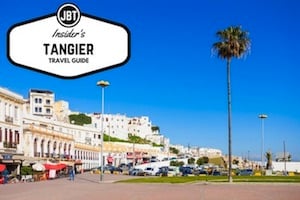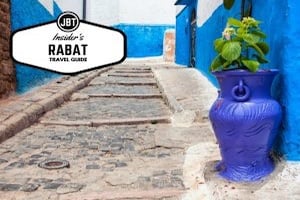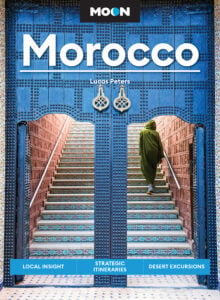 Morocco’s 35,500-plus kilometers (22,000 miles) of paved roads include stunning coastal vistas, deserts, valleys, gorges and high-mountain passes. Many areas of the country are suitable for cycling year round, and there are dozens of scenic roads popular with both independent cyclists and bike tour companies.
Morocco’s 35,500-plus kilometers (22,000 miles) of paved roads include stunning coastal vistas, deserts, valleys, gorges and high-mountain passes. Many areas of the country are suitable for cycling year round, and there are dozens of scenic roads popular with both independent cyclists and bike tour companies.
According to the UK periodical the Guardian, Morocco’s Atlas Mountains offers one of the five best cycle routes in the world. The Guardian suggests biking from Marrakech south into the Anti Atlas Mountains to the coastal Berber village of Mirleft, although from Marrakech you can also head south toward the Tiz n’ Test road or east to Morocco’s inland desert region.
The inland desert region between the High Atlas Mountains and the Algerian border is a sparsely populated area dotted with Berber villages. A popular cycle tour route is to ride from the picturesque desert town of Ouarzazate to the nearby Draa and Dades Valleys. Cycling further east takes you to the dunes of Merzouga. Biking in this region is easier than further south in the more rugged Atlas Mountains, although it is best to travel with a support vehicle as there are long stretches between villages, and access to food and water is limited.
The road along the Atlantic coast from Casablanca to Agadir via Safi and Essaouira is pleasant for biking during all four seasons. You can also cycle along the Mediterranean Coast through the Rif Mountains, but this route is not as popular with tour companies. Hashish sellers and drug traffickers utilize the Rif route between Tetouan and Melilla, so foreigners are often harassed by sellers and considered suspicious by police.
Since you’ll be spending a lot of time on the road, most tour companies recommend that you bring your own bike so you can ride more comfortably. Some airlines allow passengers to include boxed bicycles as part of their checked baggage allowance, while other airlines charge oversized or special baggage fees. Royal Air Maroc, Morocco’s national carrier, ships bicycles as special baggage and considers them to be medium/average size for surcharge purposes. As of October 2010, the special baggage fee for a bicycle on a short-haul domestic flight with Royal Air Maroc is 40 Euros ($56). If you would prefer to rent a bicycle, check with your tour company regarding rates and availability.
Moroccan drivers are not used to sharing the road with cyclists, so you should always be alert and on guard while on roads with heavy to moderate traffic. Although the majority of your Morocco cycling tour will likely be spent in the warm hospitality of villages, theft in major cities is common and you should never leave your bike unattended.
Tight clothing is not commonly worn in Morocco, so it is best to bring along some loose, modest clothing for the time you’ll spend exploring villages and cities. For women, cotton or linen pants and long-sleeve tunic-style shirts are a good wardrobe choice. Spandex or other form fitting clothing is likely to elicit stares, particularly in rural areas.
>>Read more about Journey Beyond Travel’s bicycle tours.
Written by Heather Carreiro.
Photo by Jennifer Pickens.








